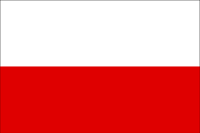Sobieszów
![]()

Sobieszów jako samodzielny ośrodek administracyjny występował od chwili swego powstania przed 1305 r. Ok. 1364 r. wieś (zwana Hermsdorf, potem Hermsdorf unterm Kynast) stała się własnością rodziny Schaffgotschów, których rodową siedzibą był górujący nad nią zamek Chojnik (niem. Kynast). W czasie wojny trzydziestoletniej miejscowość została poważnie zniszczona. W XVIII w. wieś była centrum administracyjnym i sądowniczym rozległych dóbr Schaffgotschów i sporym ośrodkiem tkactwa; znajdowały się tu też szlifiernie szkła, cegielnia, młyn wodny, stawy hodowlane i bielarnie płótna. W latach 1784-1787 działała tu kopalnia kobaltu „Johann Nepomuk”. W XIX w. stała się znaczącą bazą turystyczną dla Karkonoszy, powstały tu liczne hotele i pensjonaty. W 1891 r. doprowadzono tu z Jeleniej Góry linię kolejową, a w 1900 r. tramwajową. W maju 1945 r. Sobieszów, ówcześnie zwany - Chojniasty, stał się siedzibą gminy. W 1954 r. dotychczasowa wieś uzyskała status osiedla, zaś w 1962 r. prawa miejskie. W czerwcu 1976 r. Sobieszów został włączony w obszar administracyjny Jeleniej Góry. Sobieszów bogaty jest w pomniki przyrody i interesujące zabytki. Autor: Ivo Łaborewicz

Sobieszów as an independent administrative centre was recorded from the time of its foundation before 1305. Around 1364 the village (called Hermsdorf, later Hermsdorf unterm Kynast) became the property of the Schaffgotsch family, whose ancestral seat was the Chojnik Castle (German Kynast) towering over the settlement. During the Thirty Years’ War the village was severely damaged. In the 18th century the village was the administrative and judicial centre of the vast estates of the Schaffgotsches and also a significant centre of weaving industry; there were glass cutting plants, a brickyard, a water mill, fish ponds and bleaching plants. In the years 1784-1787 there was the Johann Nepomuk cobalt mine here. In the 19th century the town became a major tourist base for the Karkonosze Mountains with numerous hotels and guesthouses. In 1891 a railway line from Jelenia Góra was constructed and in 1900 the town got a tramway line as well. In May 945 Sobieszów, then called Chojniasty, became the seat of a gmina, or ‘municipality.’ In 1954 the village became a ‘district’ and in 1962 it became a ‘city’ and was granted town privileges. In June 1976 Sobieszów was included in the administrative area of the city of Jelenia Góra. Sobieszów is rich in natural monuments and interesting sights. Author: Ivo Łaborewicz
 Sobieszów fungierte seit seiner Gründung vor dem Jahre 1305 als eine selbstständige Verwaltungseinheit. Um das Jahr 1364 wurde das Dorf (Hermsdorf, zu einem späteren Zeitpunkt in Hermsdorf unterm Kynast umbenannt) das Eigentum der Familie Schaffgotsch, deren Familiensitz das sich über dem Dorf erhebende Schloss Chojnik (zu Deutsch: Kynast) war. Im Dreißigjährigen Krieg wurde der Ort weitgehend zerstört. Im 18. Jh. entwickelte sich das Dorf zum administrativen und gerichtlichen Zentrum der weiten, der Familie Schaffgotsch gehörenden Ländereien, sowie zu einem bedeutenden Webezentrum; es gab hier auch Glasschleifereien, eine Ziegelbrennerei, eine Wassermühle, Zuchtteiche und Leinenbleichen. In dem Zeitraum von 1784 bis 1787 funktionierte in Sobieszów ein Kobalt-Bergwerk „Johann Nepomuk”. Im 19. Jh. als der Ort zu einem wichtigen Tourismuszentrum des Riesengebirges wurde, wurden zahlreiche Hotels und Gästehäuser gegründet. In dem Jahre 1891 wurde Sobieszów mit Jelenia Góra über eine Eisenbahn-, und 1900 über eine Straßenbahnlinie verbunden. Im Mai 1945 wurde der Ort – zu jener Zeit Chojniasty genannt – zum Gemeindesitz. 1954 erlangte das Dorf den Status eines Ortsteils von Jelenia Góra und 1962 die Stadtrechte. Im Juni 1976 wurde Sobieszów wieder in das Verwaltungsgebiet der Stadt Jelenia Góra eingegliedert. In Sobieszów gibt es viele Natur- und architektonische Denkmäler.
Sobieszów fungierte seit seiner Gründung vor dem Jahre 1305 als eine selbstständige Verwaltungseinheit. Um das Jahr 1364 wurde das Dorf (Hermsdorf, zu einem späteren Zeitpunkt in Hermsdorf unterm Kynast umbenannt) das Eigentum der Familie Schaffgotsch, deren Familiensitz das sich über dem Dorf erhebende Schloss Chojnik (zu Deutsch: Kynast) war. Im Dreißigjährigen Krieg wurde der Ort weitgehend zerstört. Im 18. Jh. entwickelte sich das Dorf zum administrativen und gerichtlichen Zentrum der weiten, der Familie Schaffgotsch gehörenden Ländereien, sowie zu einem bedeutenden Webezentrum; es gab hier auch Glasschleifereien, eine Ziegelbrennerei, eine Wassermühle, Zuchtteiche und Leinenbleichen. In dem Zeitraum von 1784 bis 1787 funktionierte in Sobieszów ein Kobalt-Bergwerk „Johann Nepomuk”. Im 19. Jh. als der Ort zu einem wichtigen Tourismuszentrum des Riesengebirges wurde, wurden zahlreiche Hotels und Gästehäuser gegründet. In dem Jahre 1891 wurde Sobieszów mit Jelenia Góra über eine Eisenbahn-, und 1900 über eine Straßenbahnlinie verbunden. Im Mai 1945 wurde der Ort – zu jener Zeit Chojniasty genannt – zum Gemeindesitz. 1954 erlangte das Dorf den Status eines Ortsteils von Jelenia Góra und 1962 die Stadtrechte. Im Juni 1976 wurde Sobieszów wieder in das Verwaltungsgebiet der Stadt Jelenia Góra eingegliedert. In Sobieszów gibt es viele Natur- und architektonische Denkmäler.











